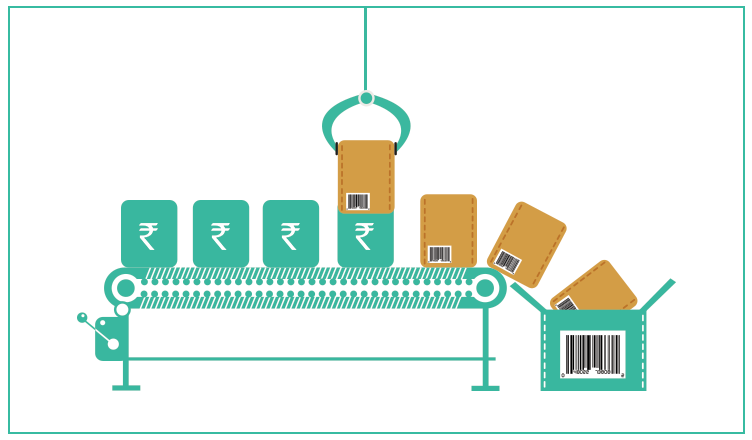Understanding the terms of payment-related services can be difficult if you are not aware of the terminology. This payment glossary takes you through the several terms associated with the PayU payments system.
PayU’s terms and conditions often include a set of terminologies often used in the payments ecosystem that may confuse you. Find below a quick payments glossary, a carefully researched set of terminology and descriptions often used in the payments ecosystem, also including acronyms. The payment glossary should help you decipher the world of payments.
Account Takeover
A type of internet fraud wherein someone obtains the login to an online account by stealing it and then takes control of the account and its access from the legitimate owner.
Acquirer or Acquiring Bank
A payments network’s bank that takes payments. Frequently, the financial institutions that offer a merchant account and handle card transactions on behalf of a merchant use POS equipment. The acquirer data is fed into the interchange system by the acquirer. It’s also known as the acquiring bank.
Acquirer Reference Number (ARN)
When a card transaction is sent from the merchant’s bank to the cardholder’s bank, it is given a unique number. The figures are used to keep track of transactions and how far they’ve progressed. They’re also known as trace IDs because they’re frequently used to track out where a transaction’s funds are at any given time.
Application Programming Interface (API)
A set of documentation, software, definitions, and tools enables software developers to access a software service or application without interruption. APIs are typically given by any entity involved in the money flow (e.g., Service providers, processors, and payment gateways) to make the money transfer process more straightforward. PayU has the most dependable and secure API, enabling merchants to interface with PayU services.
Authorisation
Authorisation is implemented as an API request to the payment gateway in Point of sale payments, in-app, and eCommerce. After performing the necessary validation and risk checks, the gateway and payment processor asks the associated card network to authorise the payment from an issuer to an acquirer. A positive check indicated creating an authorisation code and setting aside funds for the planned transactions.
Bank Identification Number (BIN)
The Bank Identification Number (BIN) or issuer Identification Number (IIN) is the first six to eight digits of the card number. They can be used to identify the card’s network and banking institution rapidly.
Capture
Following the authorization of a card, the second piece of data is passed for the transaction itself, which is referred to as capture. It indicates that a transaction has occurred, and the data has been transferred to the acquiring bank for settlement.
Cardholder
The person to whom a debit or credit card has been issued, as well as anyone else who has been permitted to use the card.
Card Issuer
The financial institution approves the issuance of a card to a person or a business. The card issuer retains control over the end user’s card usage and is responsible for that use.
Card Not Present (CNP)
When a consumer cannot physically provide their card to the merchant at the moment of the transaction, it is referred to as a transaction. Online payments, in-app payments, and MOTO transactions are examples of CNP transactions.
Cards
Banks give plastic cards to customers to facilitate cashless payments at the Point of sale, on an e-commerce website, or via a mobile app. Cards are usually administered by card networks and might be debit, credit, or prepaid. A card number, which is unique to each card, is found on a typical card. It also includes a security code used in conjunction with other data (such as the card’s expiration date and the cardholder’s name) to verify card-not-present transactions.
Card Security Code – (CVV, CVC, CID)
In addition to the card number, a 3- or-4 digit numeric code is printed on a card.
This code may go by different names, such as:
- Card Validation code for Mastercard: (CVC, CVC2)
- Card Verification Value for Visa: (CVV, CVV2)
- Unique Card Code for Amex and Discover: (CID)
Chargeback
When a cardholder or the cardholder’s bank disputes a debit or credit card transaction, the result is a chargeback. The chargeback is returned to the merchant bank for further processing. Depending on the card association’s guidelines, the merchant has a certain period to dispute the chargeback.
Cryptocurrency
Bitcoin is a digital currency created, distributed, and tracked using blockchain technology and cryptography.
Currency Conversion
The procedure for changing money from one currency to another. It usually involves one or more national currencies, and published daily conversion rates govern the buying and selling of each currency. PayU, India’s leading online payments solution provider.
In-app Payments
Shoppers use mobile apps to make electronic payments. Payments are typically performed with local payment methods or cards, and native mobile APIs or mobile-friendly web pages are used (also called mobile web).
E-commerce and in-store payments are two more electronic payments that use comparable infrastructure and require merchants to use a payment service provider to automate and maintain them. It enables merchants to take omnichannel payments.
Omnichannel Payment Solution
A payment service provider’s bundle of services and technical solutions enables a merchant to accept cashless payments across many channels (inside a mobile app, at the Point of sale, or online). Set up BharatQR and let your clients pay using any app of their choice.
Electronic Fund Transfer
The electronic transfer of money between two bank accounts, rather than via paper procedures. This includes Payroll, ACH, wire transfers, and any other electronic fund transmission.
Gateway
An organisation or a system that initiates transactions between merchants and acquiring firms. Often provides identity, reporting features, additional fraud, and transaction processing equipment and software. Integrate gateway with website and mobile app.
Issuer/ Issuing Bank
A bank that provides consumers with a card that allows them to make cashless purchases on an e-commerce website, using a smartphone app, or at a physical store. An issuer must be a member of one or more card networks or subscribe to one of the card services to issue a card.
PayU Account
A merchant who wants to use PayU as a payment service provider needs to sign up for a PayU account. After this account is approved, it gives merchants access to PayU’s payment services, which can be managed and customized using the PayU API.
Payment Methods
This enables merchants to accept in-app payments and e-commerce payments without cards. Bank transfers, direct debit, e-wallets, mobile payments, and other means are among them. PayU’s powerful payment solutions for your businesses.
Point of Sale
A shopper can make a cashless in-person payment in a merchant’s shop or another physical location using a point-of-sale service. Cards, NFC wallets (like Apple Pay), QR code wallets, and prepaid and gift cards are all used to make this payment.





